In the realm of insurance, pre-existing medical conditions often pose challenges for individuals seeking coverage. However, there’s a beacon of hope known as pre-existing medical condition waiver tip insurance, a specialized form of coverage designed to alleviate these challenges. Join us as we delve into the intricacies of this insurance, exploring its types, eligibility criteria, application process, and strategies to increase approval chances.
We’ll also examine the impact on insurance premiums, duration, renewal, and the ethical considerations surrounding this insurance.
Navigating the complexities of pre-existing medical condition waiver tip insurance can be daunting, but with the right guidance, individuals can gain a deeper understanding of their options and make informed decisions. Let’s embark on this journey together, unraveling the intricacies of this insurance and empowering individuals to secure the coverage they deserve.
Pre-Existing Medical Conditions and Insurance Coverage
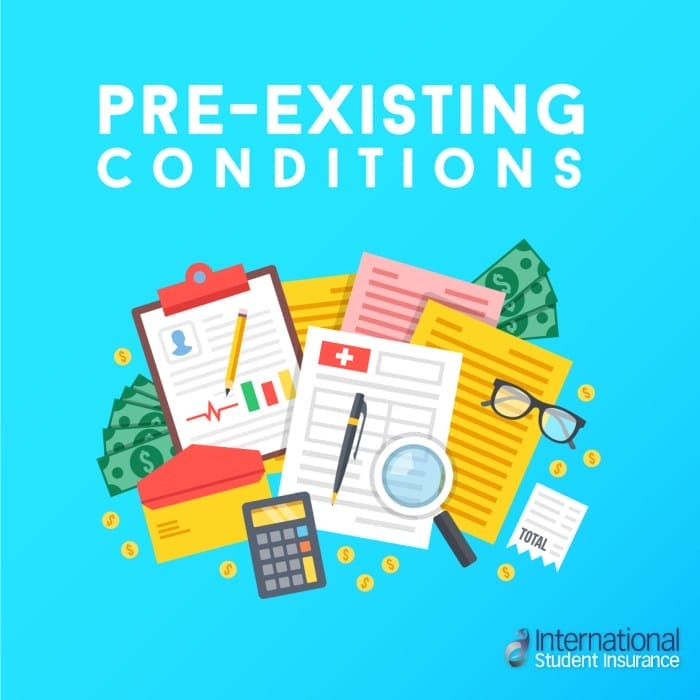
When applying for insurance, individuals with pre-existing medical conditions often face challenges in obtaining coverage. A pre-existing condition is any medical condition that existed before the insurance policy was issued. Insurance companies assess and underwrite individuals with pre-existing conditions differently compared to those without.
Insurance Coverage and Pre-Existing Conditions
Insurance companies consider pre-existing conditions when determining coverage and premiums. They evaluate the severity of the condition, its impact on the individual’s health, and the likelihood of future medical expenses. Some insurance companies may:
- Exclude coverage for the pre-existing condition.
- Charge higher premiums for coverage that includes the pre-existing condition.
- Impose waiting periods before coverage for the pre-existing condition begins.
- Limit the amount of coverage available for the pre-existing condition.
Impact of Pre-Existing Conditions on Insurance Premiums
The presence of a pre-existing condition can significantly impact insurance premiums. Individuals with pre-existing conditions may pay higher premiums than those without, as insurance companies perceive them as higher-risk.
Navigating Insurance with Pre-Existing Conditions
Despite the challenges, individuals with pre-existing conditions can still obtain insurance coverage. Here are some strategies:
- Shop around and compare quotes from multiple insurance companies.
- Consider policies that offer guaranteed issue coverage, which provides coverage regardless of pre-existing conditions.
- Look into high-deductible health plans, which can lower premiums.
- Explore government-sponsored programs like Medicaid or Medicare.
Types of Pre-Existing Medical Condition Waivers
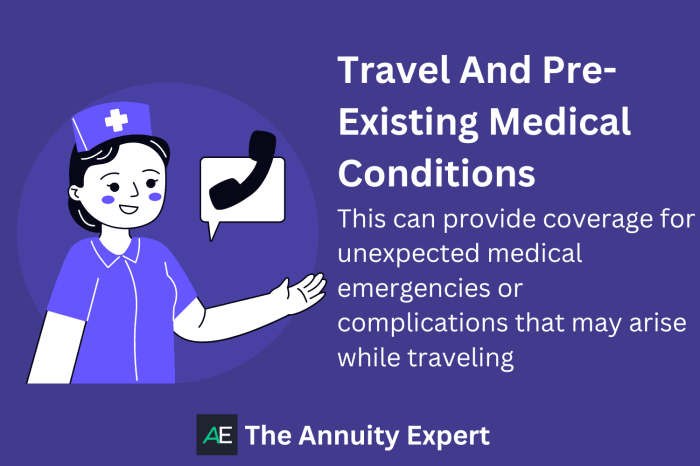
Insurance companies offer various types of pre-existing medical condition waivers to accommodate individuals with health concerns. Understanding these waivers and their implications can help you make informed decisions about your insurance coverage.
Conditional Waivers
Conditional waivers allow individuals with pre-existing conditions to obtain coverage, subject to certain terms and conditions. These conditions may include:
- Waiting Period: A period during which the pre-existing condition is not covered. The length of the waiting period varies among insurance companies and policies.
- Limited Coverage: Coverage for the pre-existing condition may be limited in terms of the amount of benefits or the types of treatments covered.
- Increased Premiums: Individuals with pre-existing conditions may be required to pay higher premiums compared to those without such conditions.
Unconditional Waivers
Unconditional waivers provide coverage for pre-existing conditions without any restrictions or limitations. These waivers are typically more expensive than conditional waivers, but they offer peace of mind knowing that your pre-existing condition will be covered.
Significance of Waivers
Pre-existing medical condition waivers play a crucial role in ensuring access to health insurance for individuals with pre-existing conditions. These waivers allow individuals to obtain coverage that would otherwise be unavailable or unaffordable.
Eligibility Criteria for Waivers
Securing a pre-existing medical condition waiver requires meeting specific eligibility criteria. Insurance companies assess various factors to determine an individual’s eligibility for a waiver. These criteria typically include:
Medical History:
- Diagnosis and Treatment: Insurance companies review the applicant’s medical history to understand the nature of their pre-existing condition, including diagnosis, treatment, and prognosis.
- Stability and Control: Applicants must demonstrate that their pre-existing condition is stable and under control. This means the condition is not actively progressing or causing severe symptoms.
- Medical Records: Applicants are required to provide detailed medical records, such as doctor’s notes, test results, and treatment plans, to support their application.
Age and Health Status:
- Age Restrictions: Some insurance companies may have age restrictions for waiver eligibility. Younger applicants are generally considered lower risk and may have better chances of obtaining a waiver.
- Overall Health: The applicant’s overall health and lifestyle are also taken into account. Individuals with healthy habits, such as regular exercise and a balanced diet, may be more likely to qualify for a waiver.
Policy Terms and Conditions:
- Policy Type: Eligibility criteria may vary depending on the type of insurance policy being applied for. Some policies may have more lenient requirements than others.
- Waiting Period: Insurance companies may impose a waiting period before coverage for the pre-existing condition takes effect. This period can range from a few months to several years.
- Renewal and Termination: The terms and conditions of the waiver may include provisions for renewal and termination. Applicants should carefully review these terms to understand their rights and responsibilities.
Variations Among Insurance Companies:
Eligibility criteria for pre-existing medical condition waivers can vary among different insurance companies. Some companies may have stricter requirements, while others may be more flexible. It’s essential to research and compare different insurance providers to find the one that offers the most favorable terms and conditions for your specific situation.
Application Process for Waivers
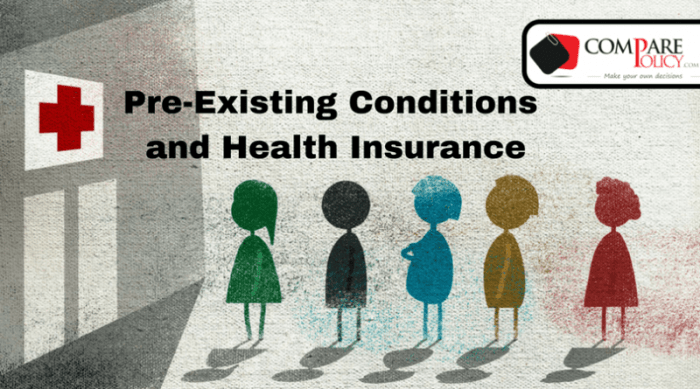
Applying for a pre-existing medical condition waiver involves a series of steps and requirements. Understanding the process ensures a smooth and efficient application.
The application process typically begins with contacting the insurance company or plan administrator to obtain the necessary forms and guidelines. These forms may be available online, through mail, or at the insurance company’s office.
Application Form
The application form for a pre-existing medical condition waiver typically includes several sections that gather information about the applicant’s medical history, current health status, and insurance needs. Some common sections in the application form may include:
- Personal Information: Basic details such as name, address, date of birth, and contact information.
- Medical History: Detailed information about past and present medical conditions, treatments, surgeries, hospitalizations, and medications.
- Current Health Status: Information about the applicant’s current health status, including any ongoing medical conditions, symptoms, and limitations.
- Insurance Needs: Details about the type of insurance coverage being sought, such as individual or family coverage, and the desired level of benefits.
- Authorization and Consent: A section where the applicant authorizes the insurance company to obtain medical records and information from healthcare providers.
It’s important to provide accurate and complete information on the application form. Any misrepresentation or omission of information could affect the outcome of the waiver application.
Timeline and Processing
The timeline for reviewing and processing waiver applications can vary depending on the insurance company and the complexity of the case. However, there are general steps involved in the process:
- Submission of Application: The completed application form and any required supporting documentation are submitted to the insurance company.
- Review of Application: The insurance company reviews the application to assess the applicant’s medical history and determine eligibility for a waiver.
- Medical Examination: In some cases, the insurance company may require the applicant to undergo a medical examination to further evaluate their health status.
- Underwriting Process: The insurance company’s underwriting team evaluates the application and medical information to determine the risk associated with insuring the applicant.
- Decision: The insurance company makes a decision on the waiver application, either approving or denying the waiver.
- Notification: The applicant is notified of the decision, typically in writing.
The timeline for each step can vary, but it’s important to allow sufficient time for the insurance company to review the application and make a decision.
Tips for Increasing Waiver Approval Chances
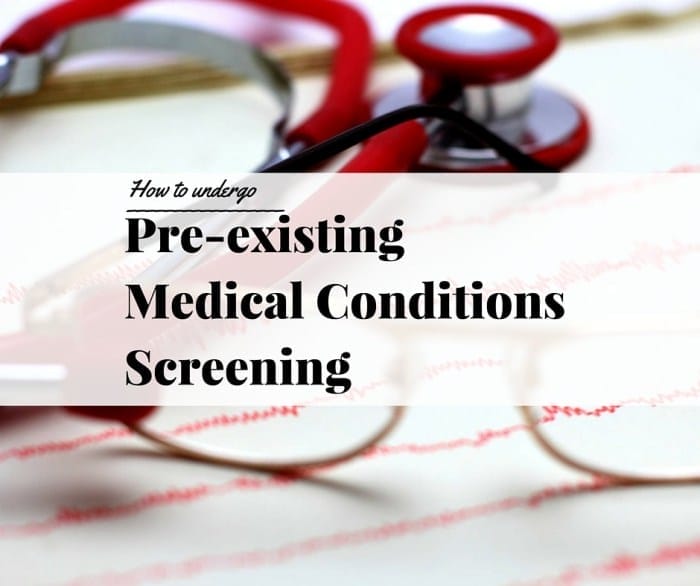
Applying for a pre-existing medical condition waiver can be a daunting task, but there are steps you can take to increase your chances of approval. Here are some practical tips and strategies to help you navigate the process successfully:
Accurate and Comprehensive Medical History Disclosure
Honesty and transparency are crucial in the waiver application process. Disclose your medical history accurately and comprehensively, including all relevant conditions, treatments, and medications. Provide detailed information about the nature, severity, and duration of your pre-existing condition.
Supporting Documentation
Gather and submit supporting documentation to substantiate your medical history and condition. This may include medical records, test results, doctor’s notes, and any other relevant documentation that supports your claim.
Role of a Medical Professional
Consider involving a medical professional in your waiver application process. A doctor or healthcare provider can provide a professional assessment of your condition and its impact on your ability to obtain insurance. Their support can strengthen your application and improve your chances of approval.
Patience and Persistence
The waiver approval process can be lengthy and may require multiple rounds of communication with the insurance company. Be patient and persistent throughout the process. Follow up regularly to check on the status of your application and address any additional information requests promptly.
Impact of Waivers on Insurance Premiums
Obtaining a pre-existing medical condition waiver can significantly influence insurance premiums. Insurance companies evaluate the risk associated with insuring individuals with pre-existing conditions and adjust premiums accordingly.
Premium Adjustments
When an insurance company approves a pre-existing medical condition waiver, it typically results in premium adjustments. These adjustments are based on several factors, including the:
- Type of pre-existing condition: Different medical conditions carry varying degrees of risk, and insurance companies assess premiums accordingly.
- Severity of the condition: The severity of a pre-existing condition also impacts premiums. More severe conditions may lead to higher premiums.
- Likelihood of future claims: Insurance companies consider the probability of future claims related to the pre-existing condition when setting premiums.
- Age and overall health: The individual’s age and overall health status also influence premium adjustments.
Discounts and Surcharges
In some cases, insurance companies may offer discounts or surcharges based on the pre-existing condition waiver. For example, if an individual successfully manages their condition or demonstrates a healthy lifestyle, they may be eligible for a discount. Conversely, if the condition is severe or requires ongoing treatment, surcharges may apply.
Duration and Renewal of Waivers
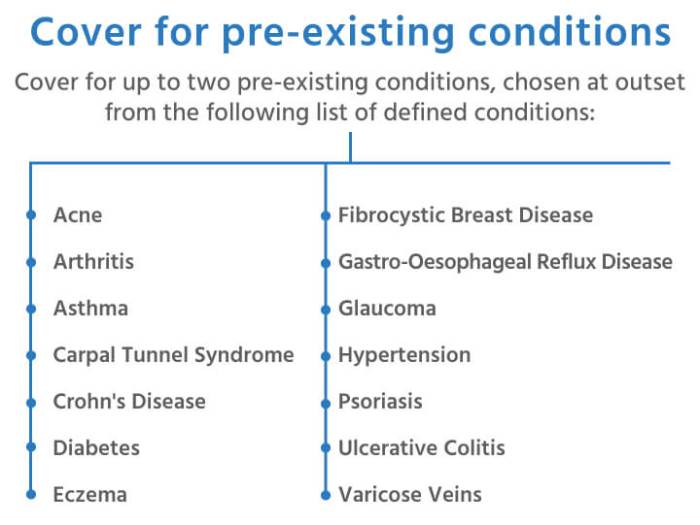
Pre-existing medical condition waivers typically have a specific duration, ranging from a few months to several years. The exact duration may vary depending on the insurance company, the type of waiver, and the individual’s circumstances.
Once the waiver period expires, the individual may need to renew it to continue coverage. The renewal process typically involves submitting an updated application and providing additional information about the individual’s medical condition. The insurance company will then review the application and determine whether to renew the waiver.
Renewal of Waivers
- Eligibility: Individuals who meet the eligibility criteria for the waiver at the time of renewal may be eligible for renewal.
- Application Process: The renewal process typically involves submitting an updated application and providing additional information about the individual’s medical condition.
- Approval Chances: The chances of waiver renewal depend on factors such as the individual’s medical condition, the insurance company’s underwriting guidelines, and the individual’s compliance with the terms of the waiver.
Termination of Waivers
- Material Misrepresentation: If the individual provided false or misleading information on the application, the insurance company may terminate the waiver.
- Non-Compliance with Waiver Terms: If the individual fails to comply with the terms of the waiver, such as paying premiums on time or providing accurate information about their medical condition, the insurance company may terminate the waiver.
- Change in Medical Condition: If the individual’s medical condition changes significantly, the insurance company may terminate the waiver.
Implications of Waiver Expiration
If a waiver expires and is not renewed, the individual may lose coverage for their pre-existing medical condition. This can lead to financial hardship if the individual needs medical treatment for their condition. In some cases, the individual may be able to purchase a new health insurance policy, but they may be subject to higher premiums or exclusions for their pre-existing condition.
Options Available to Individuals
- Renew the Waiver: Individuals should contact their insurance company to inquire about the renewal process and eligibility requirements.
- Shop for a New Policy: Individuals may be able to find a new health insurance policy that provides coverage for their pre-existing condition. However, they may be subject to higher premiums or exclusions.
- Consider Other Coverage Options: Individuals may also consider other coverage options, such as short-term health insurance or catastrophic health insurance, which may provide limited coverage for pre-existing conditions.
Ethical Considerations in Waiver Practices
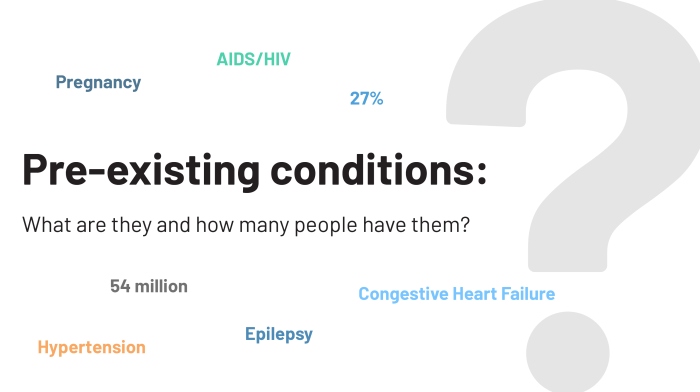
Pre-existing medical condition waivers in insurance coverage raise ethical questions related to fairness, equity, and access to insurance.
Fairness and Equity
Waivers may be seen as unfair to individuals who are denied coverage due to pre-existing conditions, potentially leading to financial hardship and limited access to healthcare. This can exacerbate health disparities and create a system where those with pre-existing conditions are penalized for their health status.
Access to Insurance Coverage
Waivers can limit access to insurance coverage for individuals with pre-existing conditions, potentially leading to gaps in healthcare coverage and financial instability. This can have a significant impact on individuals’ ability to manage their health conditions and maintain their quality of life.
Role of Insurance Companies
Insurance companies have a responsibility to balance financial risk with the needs of individuals with pre-existing conditions. They must ensure that their practices are fair, equitable, and do not discriminate against individuals based on their health status.
Transparency and Communication
Insurance companies should be transparent about their waiver practices and communicate clearly with individuals about the terms and conditions of waivers. This helps individuals make informed decisions about their insurance coverage and understand their options.
Regulatory Oversight
Regulatory bodies play a crucial role in ensuring that insurance companies’ waiver practices are fair and equitable. They can implement regulations that protect individuals with pre-existing conditions and ensure that insurance companies comply with ethical standards.
Future Trends and Innovations
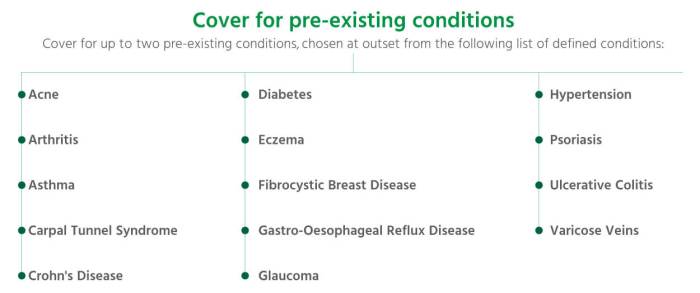
The landscape of pre-existing medical condition waiver practices is continuously evolving, driven by advancements in technology, shifting societal attitudes, and regulatory changes. Here are some potential future trends and innovations that could shape the industry:
Role of Technology and Data Analytics: Technology and data analytics are revolutionizing the insurance industry, and this trend is expected to continue in the context of pre-existing medical condition waivers. Insurers are increasingly leveraging sophisticated data analysis techniques to assess risk more accurately, leading to more informed underwriting decisions and potentially higher approval rates for waivers.
Standardization and Best Practices
There is a growing recognition of the need for standardized waiver guidelines and industry-wide best practices. This could involve the development of common criteria for eligibility, standardized application forms, and transparent underwriting processes. Such standardization could enhance consistency, fairness, and efficiency in waiver practices, benefiting both insurers and policyholders.
Artificial Intelligence and Machine Learning
Artificial intelligence (AI) and machine learning (ML) algorithms are expected to play an increasingly significant role in waiver underwriting. These technologies can analyze vast amounts of data, identify patterns and trends, and make predictions, which could lead to more accurate risk assessment and improved decision-making.
AI and ML could also assist in automating certain aspects of the waiver application and review process, enhancing efficiency and reducing processing times.
Blockchain and Decentralized Networks
Blockchain technology and decentralized networks have the potential to transform the insurance industry, including the issuance and management of pre-existing medical condition waivers. Blockchain can provide a secure and transparent platform for storing and sharing medical data, enabling policyholders to easily and securely share their medical history with insurers.
Decentralized networks could also facilitate the development of peer-to-peer insurance models, where individuals pool their resources to cover medical expenses, potentially reducing the need for traditional insurance policies.
Telemedicine and Remote Medical Assessments
The rise of telemedicine and remote medical assessments could also impact pre-existing medical condition waiver practices. Insurers may increasingly use telemedicine platforms to conduct medical assessments remotely, reducing the need for in-person visits and making the waiver application process more convenient for policyholders.
Remote medical assessments could also help insurers gather more comprehensive and accurate medical information, leading to more informed underwriting decisions.
Last Word

Pre-existing medical condition waiver tip insurance stands as a testament to the evolving landscape of healthcare and insurance. As we move forward, we can anticipate advancements in technology and data analytics that will further refine underwriting practices and decision-making. The insurance industry has a crucial role to play in balancing financial risk with the needs of individuals with pre-existing conditions, ensuring fairness, equity, and access to coverage for all.
As we continue to navigate the complexities of healthcare, let us remain committed to finding innovative solutions that empower individuals to lead healthier and more secure lives.
FAQs
What are the common types of pre-existing medical condition waivers?
Pre-existing medical condition waivers typically fall into two categories: conditional waivers and unconditional waivers. Conditional waivers require the individual to meet certain criteria, such as maintaining good health or undergoing specific treatments, to keep the waiver in effect. Unconditional waivers, on the other hand, provide coverage regardless of the individual’s health status.
How can I increase my chances of waiver approval?
To increase your chances of waiver approval, it’s essential to provide accurate and comprehensive information about your medical history. Disclose all pre-existing conditions and provide relevant medical records. Additionally, consider seeking support from a medical professional who can advocate for your case and provide a favorable assessment of your health status.
How do insurance companies determine premiums for individuals with pre-existing medical condition waivers?
Insurance companies assess the risk associated with each individual based on their pre-existing condition and overall health status. Premiums are typically higher for individuals with waivers compared to those without pre-existing conditions. However, the specific premium amount can vary depending on the type of waiver, the severity of the condition, and other factors.



